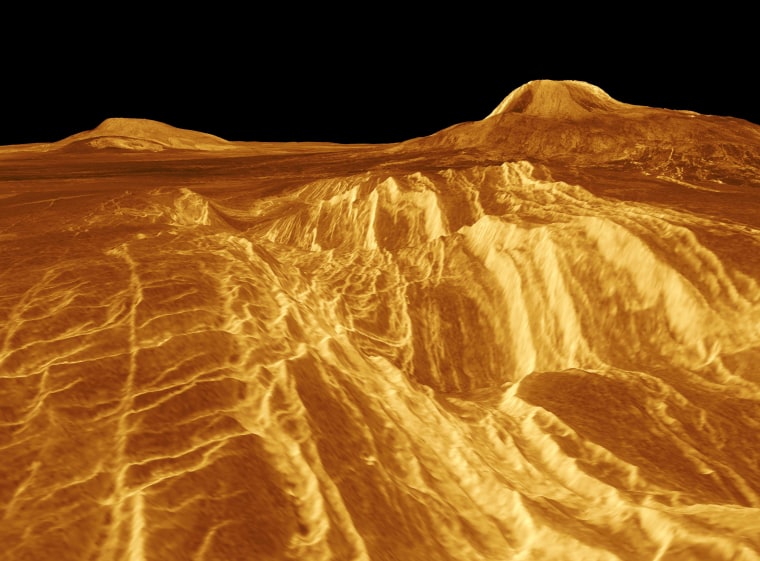Venus may have once possessed strange oceans of carbon dioxide fluid that helped shape the planet's surface, researchers say.
Venus is often described as Earth's twin planet because it is the world closest to Earth in size, mass, distance and chemical makeup. However, while Earth is a haven for life, Venus has a crushing CO2 atmosphere and clouds of corrosive sulfuric acid floating over a rocky desert surface hot enough to melt lead.
Although Venus is currently unbearably hot and dry, it might have once had oceans like Earth. Previous research suggested that Venus' atmosphere could have had significant amounts of water vapor in the past — but the planet was probably too warm for such water to cool down and precipitate. [The Weirdest Facts About Venus]
Instead of seas of water, scientists now suggest that Venus might have once possessed bizarre oceans of carbon dioxide fluid.
On Earth, CO2 is typically in gaseous form, but under the right conditions of temperature and pressure, it can exist as a solid or a liquid. Past a critical point of combined temperature and pressure, carbon dioxide can enter a "supercritical" state. Such a supercritical fluid can have properties of both liquids and gases. For example, it can dissolve materials like a liquid, but flow like a gas.
To see what the effects of supercritical carbon dioxide on Venus might be, Cornell University theoretical physicist Dima Bolmatov and his colleagues investigated the unusual properties of supercritical matter. In computer simulations, Bolmatov and his colleagues found that supercritical matter can shift dramatically from gaslike to liquidlike properties.

The atmospheric pressure on the surface of Venus is currently more than 90 times that of Earth, but in the early days of the planet, Venus' surface pressure could have been dozens of times greater. Under such conditions, supercritical carbon dioxide with liquidlike behavior might have formed, Bolmatov said.
"This in turn makes it plausible that geological features on Venus, like rift valleys, riverlike beds, and plains, are the fingerprints of near-surface activity of liquidlike supercritical carbon dioxide," Bolmatov told Space.com.
The scientists detailed their findings in the Aug. 21 issue of the Journal of Physical Chemistry Letters.
This is a condensed version of a report from Space.com. Read the full report. Follow Space.com on Twitter, Facebook and Google+.